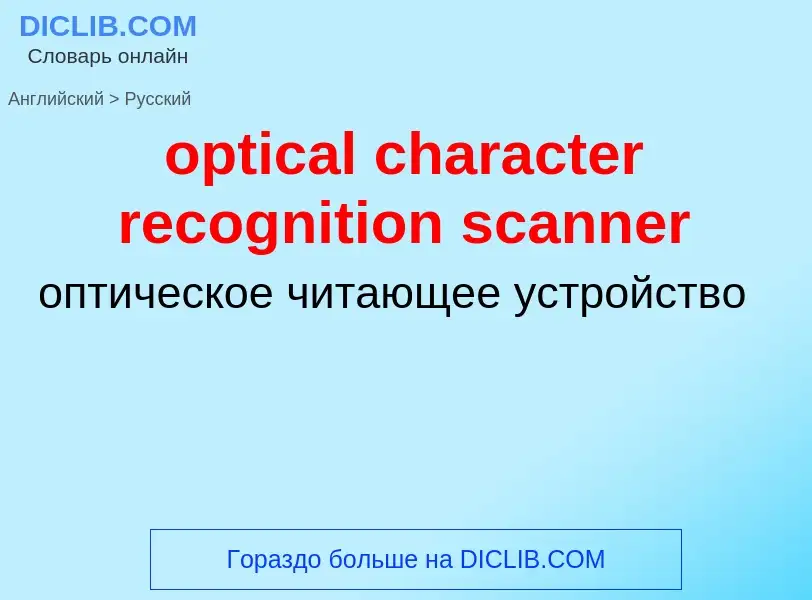Translation and analysis of words by ChatGPT artificial intelligence
On this page you can get a detailed analysis of a word or phrase, produced by the best artificial intelligence technology to date:
- how the word is used
- frequency of use
- it is used more often in oral or written speech
- word translation options
- usage examples (several phrases with translation)
- etymology
optical character recognition scanner - translation to russian
Wikipedia
A process called Optical Character Recognition (OCR) converts printed texts into digital image files. It is a digital copier that uses automation to convert scanned documents into editable, shareable PDFs that are machine-readable. OCR may be seen in action when you use your computer to scan a receipt. The scan is then saved as a picture on your computer. The words in the image cannot be searched, edited, or counted, but you may use OCR to convert the image to a text document with the content stored as text. OCR software can extract data from scanned documents, camera photos, and image-only PDFs. It makes static material editable and does away with the necessity for human data entry.
Widely used as a form of data entry from printed paper data records – whether passport documents, invoices, bank statements, computerized receipts, business cards, mail, printouts of static-data, or any suitable documentation – it is a common method of digitizing printed texts so that they can be electronically edited, searched, stored more compactly, displayed on-line, and used in machine processes such as cognitive computing, machine translation, (extracted) text-to-speech, key data and text mining. OCR is a field of research in pattern recognition, artificial intelligence and computer vision.
Early versions needed to be trained with images of each character, and worked on one font at a time. Advanced systems capable of producing a high degree of recognition accuracy for most fonts are now common, and with support for a variety of digital image file format inputs. Some systems are capable of reproducing formatted output that closely approximates the original page including images, columns, and other non-textual components.

